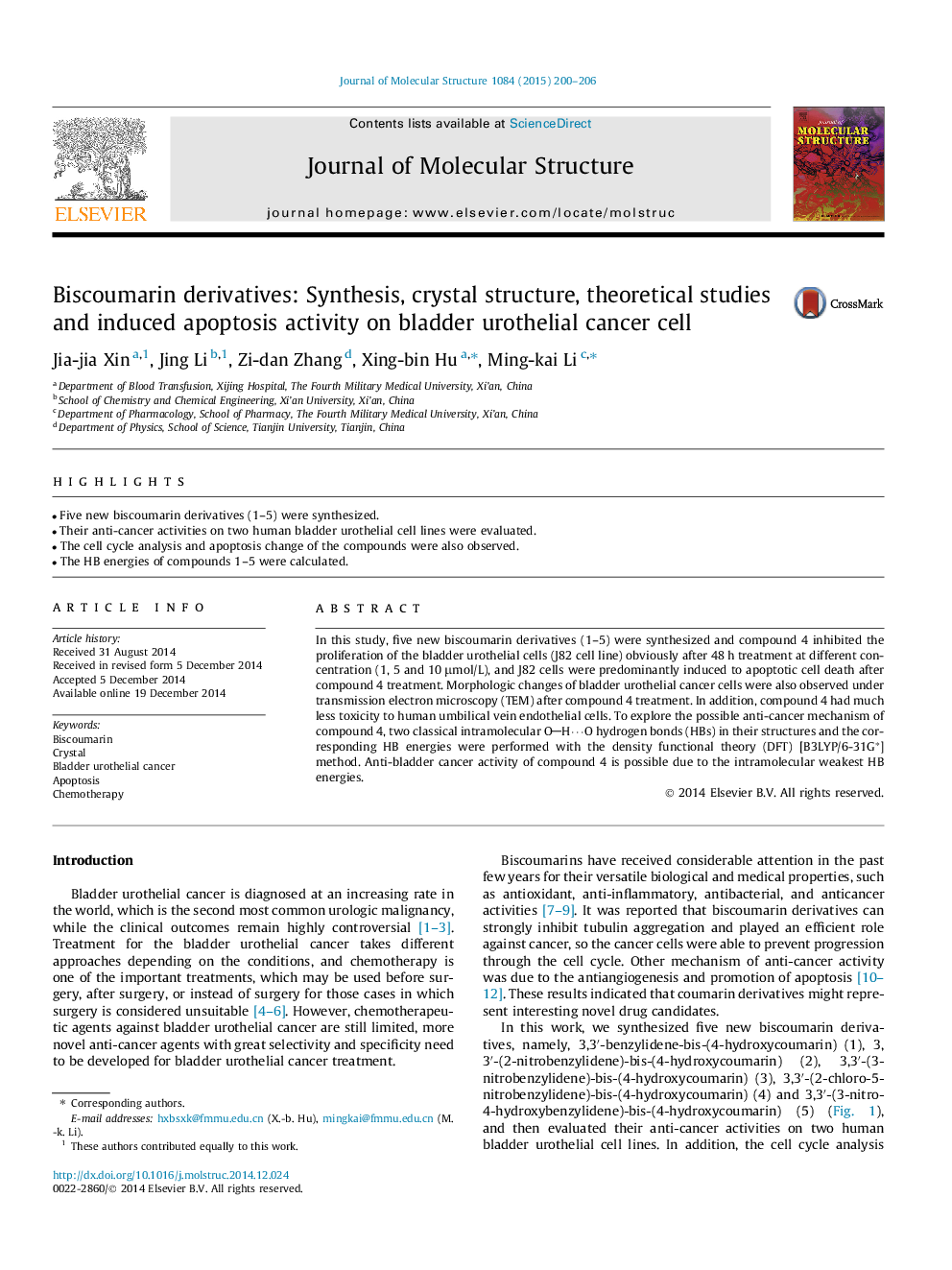| Article ID | Journal | Published Year | Pages | File Type |
|---|---|---|---|---|
| 1405396 | Journal of Molecular Structure | 2015 | 7 Pages |
•Five new biscoumarin derivatives (1–5) were synthesized.•Their anti-cancer activities on two human bladder urothelial cell lines were evaluated.•The cell cycle analysis and apoptosis change of the compounds were also observed.•The HB energies of compounds 1–5 were calculated.
In this study, five new biscoumarin derivatives (1–5) were synthesized and compound 4 inhibited the proliferation of the bladder urothelial cells (J82 cell line) obviously after 48 h treatment at different concentration (1, 5 and 10 μmol/L), and J82 cells were predominantly induced to apoptotic cell death after compound 4 treatment. Morphologic changes of bladder urothelial cancer cells were also observed under transmission electron microscopy (TEM) after compound 4 treatment. In addition, compound 4 had much less toxicity to human umbilical vein endothelial cells. To explore the possible anti-cancer mechanism of compound 4, two classical intramolecular OH⋯O hydrogen bonds (HBs) in their structures and the corresponding HB energies were performed with the density functional theory (DFT) [B3LYP/6-31G∗] method. Anti-bladder cancer activity of compound 4 is possible due to the intramolecular weakest HB energies.
